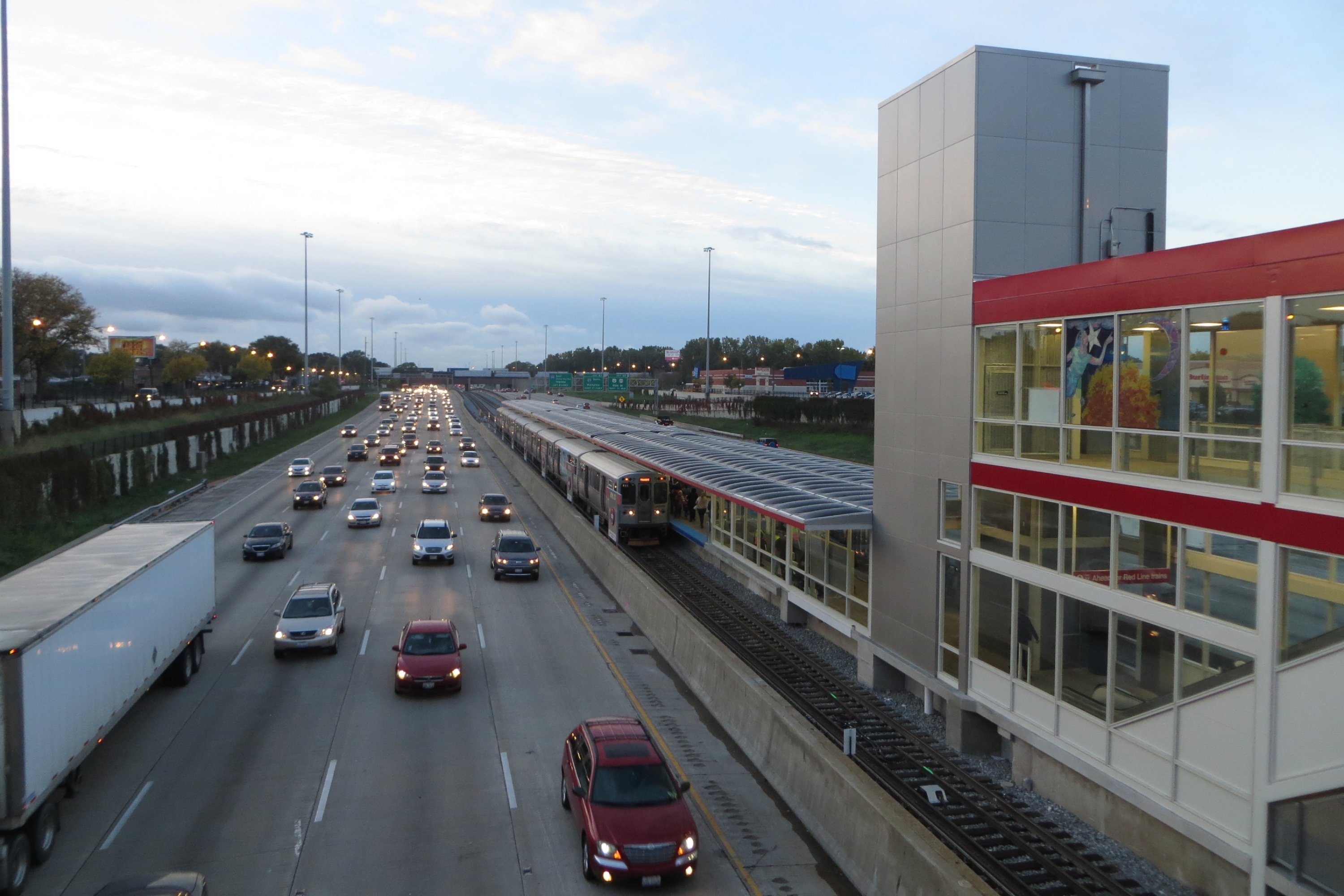Fengdi Guo awarded first place in LTTP Data Analysis Student Contest
In an award-winning paper, the PhD student and MIT CSHub research assistant measures how the weight of vehicles deteriorates pavements.

Pavement deterioration takes many forms. It can manifest in almost imperceptible flaws, like surface roughness, to much more evident distresses, such as web-like alligator cracks. While the causes of these distresses are numerous, one cause, in particular, can impose an intractable burden: the weight of a vehicle.
In a prize-winning paper, Fengdi Guo, a PhD candidate at the MIT Concrete Sustainability Hub, helps clarify the layered relationship between traffic weight and pavement deterioration. The machine learning models he proposes have found that traffic weight induces specific kinds of damage in asphalt pavements, accelerating their deterioration rates. Concrete pavements, however, proved insensitive to traffic weight.
The paper, “Assessing the Influence of Overweight Vehicles on Pavement Performance,” was awarded first place in The Aramis López Challenge Category of the LTPP Analysis Student Contest, a joint effort of the Federal Highway Administration (FHWA) and the American Society of Civil Engineers' Transportation and Development Institute. Guo will present his findings at the 2021 Transportation Research Board annual meeting.
As one might expect, predicting pavement deterioration is crucial to maintaining road networks. And traffic — specifically, accumulative traffic weights during a period — can play a key role in how quickly a pavement deteriorates.
“The accumulative traffic weight is the product of two components: traffic volume, represented by the annual average daily truck traffic (AADTT), and traffic weight, represented by the approximate weight of a flatbed truck,” explains Guo. “If, for instance, AADTT on a segment were to increase by 1,000, the time between maintenances would decrease by five months, on average.”
When one considers the latest transportation trends, truck traffic weight is likely to become especially problematic; according to the U.S. Energy Information Administration, heavy- and medium-duty vehicle traffic is expected to grow by nearly 40 percent by 2050, far outstripping growth in passenger vehicle traffic.
Accommodating such heavy truck traffic will require more sophisticated tools — particularly because the relationship between traffic weight and pavement deterioration has remained uncharted.
“Though greater traffic weight indisputably deteriorates asphalt pavements,” says Guo, “the types of deterioration it causes are much more unclear. Numerous factors, from precipitation rates to the thickness of a single layer of a pavement, can alter how a pavement responds to the weight of a vehicle.”
To account for these many factors, researchers and engineers have tended to use either complex mechanistic models or data-driven models. The former focus narrowly on the mechanical properties of pavements, require large computational resources, and are not suitable for analyzing a pavement network. The latter can be applied to a pavement network, yet they cannot incorporate a pavement’s unique maintenance and deterioration history.
In his paper, Guo sought to expand the scope of data-driven models. Instead of simply estimating a pavement’s key historical factors, he incorporated them directly into his calculations.
His approach relies on what is known as a recurrent neural network (RNN). A technique of artificial intelligence, neural networks loosely mimic neurons of the mind to solve complex problems. He developed three RNN models for the prediction of roughness, rut, and alligator crack for asphalt pavements — performance metrics that he found to be sensitive to traffic weights in his paper.
To create his neural network, Guo developed a matrix of input layers that supply relevant data (such as pavement structures and freeze index), hidden layers that process and relate that data, and output layers that present the final calculations. Different from conventional feed-forward neural networks in pavement engineering, the hidden layers in RNN models can store key historical information for pavement deterioration.
Once Guo developed these models, he inputted road quality data from the FWHA’s Long Term Pavement Performance (LTTP) database. What he found was a clear relationship between traffic weight and certain forms of damage.
“My models show that increased traffic weights on asphalt pavements accelerate deterioration rates for roughness by 1.3 percent, rut by 7 percent, and alligator crack by 3.7 percent, given a representative asphalt pavement,” Guo explains.
Since he had a limited dataset, Guo’s model could not determine the role of traffic weight on other forms of damage for asphalt pavements. In the future, he will use more robust datasets to understand these other potential repercussions. He also hopes to explore the nationwide economic influence caused by overweight vehicles.
Up until now, the specific impacts of traffic weight on road quality have been a loaded issue in the transportation community. Though some questions remain, Guo’s models have helped clarify a pernicious problem and helped advance an avenue for further, fruitful research.
The research was supported through the MIT Concrete Sustainability Hub by the Portland Cement Association and the Ready Mixed Concrete Research and Education Foundation.





































